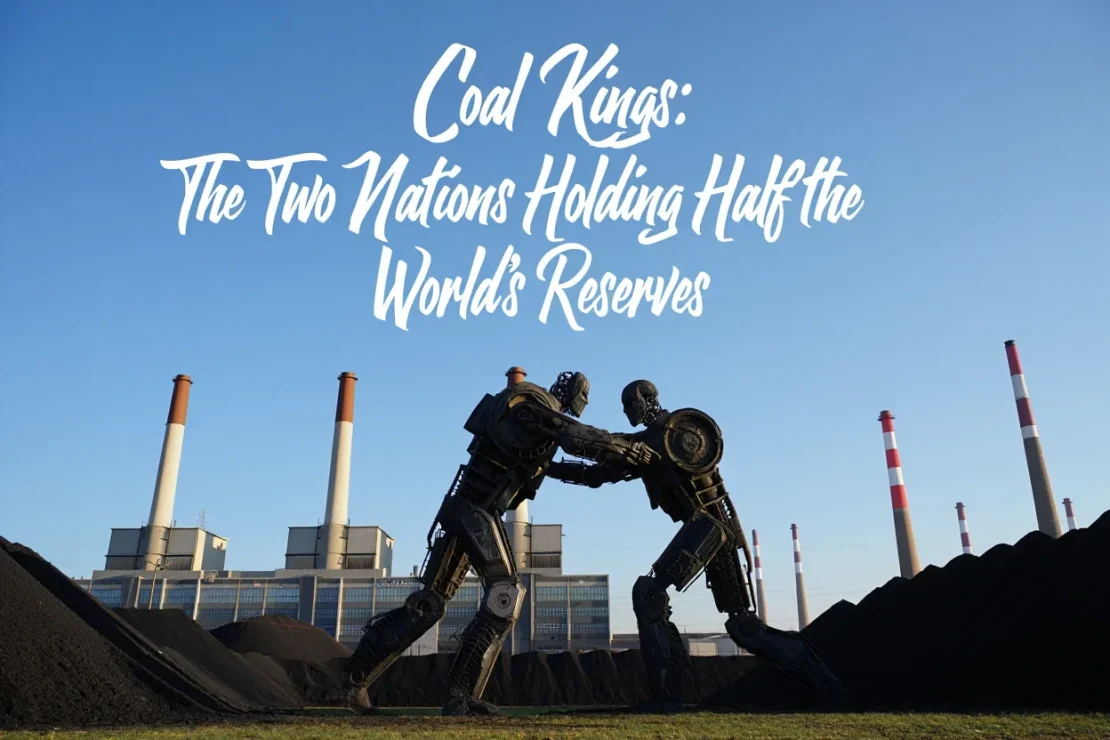What two countries have nearly 50% of global coal reserves? US & Russia
April 3, 2025
Regarding coal reserves, two nations stand head and shoulders above the rest: the United States and Russia. These two powerhouses collectively hold almost 50% of the world’s known coal reserves, with the U.S. leading at approximately 23% and Russia close behind with around 15-17%. Their massive reserves provide both countries significant energy security and a crucial bargaining chip in the global energy market.
Despite the rhetoric of coal’s inevitable decline, the reality is far different. While developed nations push for aggressive green energy policies, the developing world has a different agenda. From China to Indonesia, from Vietnam to South Africa, coal remains king, and the data proves it.
Coal: A Resilient Investment Despite Constant Doom Predictions
Coal has been written off multiple times as a dying industry. Yet, every time analysts proclaim its demise, it finds new life. Why? The answer is simple: cost and reliability. While renewables have gained ground, they still suffer from intermittency issues and high infrastructure costs—factors the developing world cannot ignore.
Developing Nations Are Doubling Down on Coal
- China: Despite its push into renewables, China remains the world’s largest consumer of coal. In 2023 alone, it approved over 100 gigawatts of new coal-fired power plants. That’s more than the total installed capacity of some developed nations.
- Indonesia: This Southeast Asian nation is ramping up its coal exports while expanding its own coal power infrastructure. The country still relies on coal for over 60% of its electricity generation.
- Vietnam: Originally a poster child for green energy adoption, Vietnam has now backtracked and plans to build more coal plants to meet surging electricity demands.
- In countries like South Africa and Mozambique, coal remains the primary power source. The African continent lacks the financial resources to fully embrace costly green alternatives, making coal the only viable energy source for the foreseeable future.
This wave of coal investment highlights a fundamental truth: while the West pushes the idea of a clean energy transition, the rest of the world is focused on economic growth and affordable electricity. No government wants to impose skyrocketing energy prices on its citizens, and until renewables can match the cost efficiency of coal, the trend will continue.
Psychology, Cognitive Bias, and the Coal Debate
The idea that coal is “dead” is largely driven by confirmation bias. Many Western analysts want to believe in a clean-energy future, so they cherry-pick data supporting their viewpoint while ignoring the reality. This is the same psychological bias that led investors to believe oil was obsolete before its resurgence in the 2020s.
The availability heuristic also plays a role. Because Western media outlets frequently highlight wind and solar advancements, people assume the entire world is simultaneously moving away from fossil fuels. In reality, most developing nations prioritize economic stability over ideological energy transitions.
Another key cognitive bias at play is status quo bias. Policymakers in developing nations default to coal because it has worked reliably for decades. When faced with the uncertainty of newer, less-proven technologies, they stick with what they know. This psychological tendency ensures that coal remains the backbone of the global energy economy.
A Chemistry Perspective: The Energy Density Factor
From a scientific standpoint, coal’s continued dominance can be explained by one key concept: energy density. Measured in megajoules per kilogram (MJ/kg), energy density tells us how much energy is stored in a given fuel source. Coal has an energy density of 24 MJ/kg, which, while lower than oil and gas, is significantly higher than most renewable energy sources when factoring in efficiency losses from storage and conversion.
This is crucial because while wind and solar may generate large amounts of energy, they require massive storage systems (such as batteries) to be viable around the clock. Those storage solutions are costly and inefficient compared to simply burning coal. Until a new technology provides an alternative with equal or greater energy density at a comparable cost, coal will remain indispensable.
The Harsh Truth: Coal Will Only Die When a Cheaper Alternative Emerges
People can talk endlessly about reducing carbon emissions, but talk doesn’t pay the bills. For most of the developing world, economic survival is the number one priority, which means using the most affordable and reliable energy source. Right now, that’s coal. Until an alternative meets these three criteria:
- Cheaper than coal
- As reliable as coal
- Easier to implement than coal
… coal will continue to be a dominant force.
So far, no alternative has met all three of these conditions simultaneously. That’s why predictions of coal’s demise remain premature. The energy landscape will shift only when technology and economics align to make green energy the better option, not just the morally preferable one.
Final Thoughts: The Brutal Reality of Coal’s Future
The United States and Russia command nearly 50% of global coal reserves, a fact often ignored in the Western narrative of an inevitable green transition. Meanwhile, China and India—home to over 35% of the world’s population—are ramping up coal-fired power plants, not shutting them down.
Developing nations prioritize economic survival over ideological purity, and coal delivers what renewables cannot: energy density, reliability, and cost-effectiveness. Western analysts, trapped by cognitive biases, parrot doomsday predictions, ignoring the hard truth—without a cheaper, scalable, and equally dependable alternative, coal’s dominance will persist. Energy transitions aren’t dictated by wishful thinking but by cold, hard chemistry and economics.













